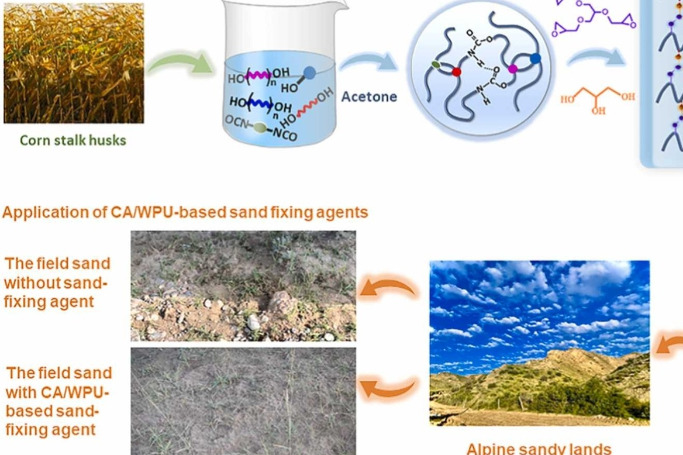Chinese scientists say new imaging will protect healthy tissue in breast cancer surgery
Chinese researchers say they have developed a new imaging method that can accurately detect the margins of breast cancer tumours both before and during surgery, allowing for more healthy tissue to be preserved.
According to the team, the imaging targets a biomarker often overexpressed on tumour surfaces and can better detect tumour margins for breast-conserving surgery (BCS), which is preferred for early-stage breast cancer patients.
“BCS involves not only ensuring complete tumour resection but also retaining an adequate amount of healthy tissue to maintain cosmetic integrity,” the researchers wrote in a paper published in the Science Translational Medicine journal on October 16.
The challenge is that being more conservative with tissue removal means there is a higher chance of the cancer recurring – the tissue deemed healthy might still have cancer cells remaining – and patients could require a follow-up operation to remove additional cancerous tissue.
Margin assessments that can be used during surgery to provide “real-time, accurate and effective identification of positive margin tissues are needed to minimise reoperation rates in clinical practice”, the team wrote.
In 2022, some 2.3 million women around the world were diagnosed with breast cancer, according to the World Health Organization.
Around 66 per cent of breast cancer cases are diagnosed before the cancer has spread outside the breast, according to the US National Breast Cancer Foundation.
One method of intraoperative assessment gaining attention is the use of fluorescence imaging because of its speed generating real-time images, its low cost and ease of use, said the researchers from Xiangan Hospital at Xiamen University, Nanjing Normal University, Shantou University Medical College and Yunnan Cancer Hospital.
But clinically approved fluorescent markers still face the issue of low tumour specificity, or the ability to distinguish between cancerous and non-cancerous cells, so the team linked their markers with something that could detect the tumour cell surface biomarker – trophoblastic cell surface antigen 2 (Trop2) – which is overexpressed in more than 85 per cent of tumours.
“Trop2 probes are a promising approach for improving surgical removal of breast tumours,” Molly Ogle, an associate editor for the journal, said in an editor’s note on the paper.
As part of the team’s combination strategy, the researchers created their imaging probes using sacituzumab govitecan (SG) – a US Food and Drug Administration approved antibody-drug conjugate used in breast cancer therapy – which targets Trop2.
“We used SG to demonstrate two complementary imaging approaches for breast cancer detection, namely immuno-positron emission tomography (PET) and near-infrared (NIR) intraoperative imaging to detect tumour margins,” the team wrote.
For the immunoPET approach to visualise cancer lesions, they labelled SG with zirconium-89 which in mice led to more intense PET signals in tumour tissue than healthy tissue.
The team also combined SG with indocyanine green, a near-infrared fluorescent medical dye marker, that helped guide tumour removal surgery in breast cancer model mice. The researchers said it “performed well in discriminating tumours from normal breast tissue during surgery”.
To promote the development of their probes, they tested them on tissue already removed from the body because of the long trial periods for fluorescence-guided surgery in which the markers are injected into the patient.
The team tested their near-infrared probes on both healthy and cancerous tissue from 26 human patients, and found the procedure could distinguish between the two in just 15 minutes, with a sensitivity of 86.96 per cent.
“Compared with currently available tumour margin detection methods, this technology offers several advantages, including the high-resolution wide-field imaging of whole-tissue specimens within a clinically relevant time frame and profiling of the tumour biomarker Trop2,” the team wrote.
In mice, the team found no evidence that the probes were toxic to cells and said they saw no abnormalities in the main markers of kidney and liver function. The team said the probes needed further study using larger cohorts, and more research into false negative results.
“We have developed a biocompatible and viable diagnostic imaging reagent that is expected to be a platform during surgery, with the potential to replace intraoperative frozen sections of breast tissues for the future precise management of breast cancer,” the researchers said.
We are thrilled to extend a warm welcome to the China Scientist Awards!
Join us for the China Scientist Awards, a premier event in the realm of research. Whether you're joining virtually from anywhere in the world, this is your invitation to explore and innovate in the field of research. Become part of a global community of researchers, scientists, and professionals passionate about advancing research.
visit: chinascientist.net
Nomination Link: https://chinascientist.net/award-nomination/?ecategory=Awards&rcategory=Awardee
Registration Link:https://chinascientist.net/award-registration/
For inquiries, contact us at contact@chinascientist.net
-------------------------------------
Other website:
visit: chinascientist.net
Nomination Link: https://chinascientist.net/award-nomination/?ecategory=Awards&rcategory=Awardee
Registration Link:https://chinascientist.net/award-registration/
For inquiries, contact us at contact@chinascientist.net




Comments
Post a Comment